Bushnell 78-7880, 78-7860, 78-7830, 78-7845 User Manual
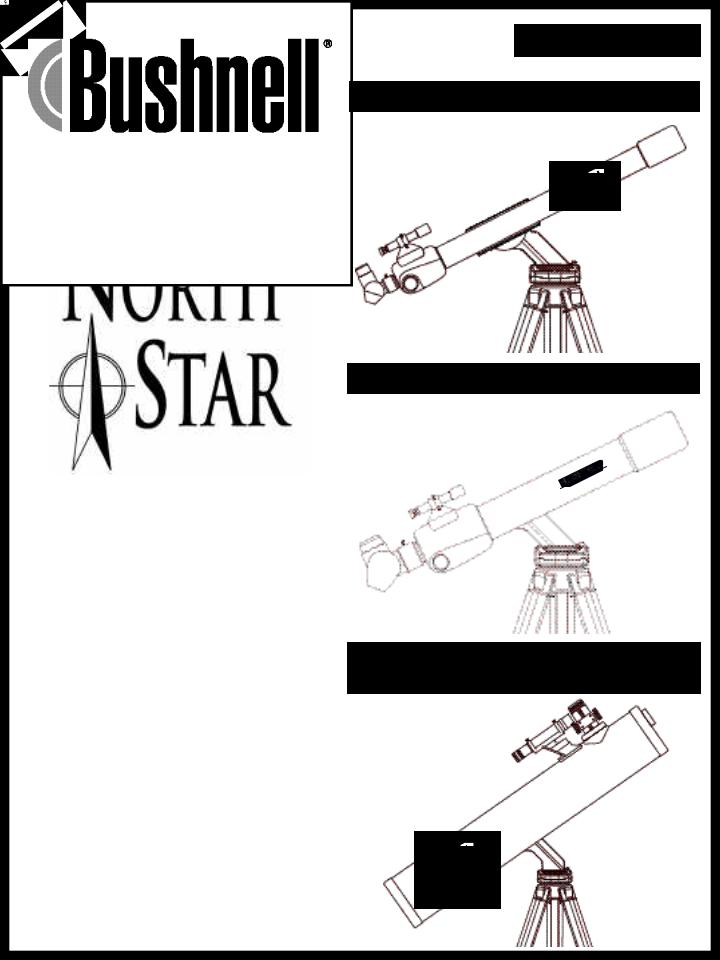
Lit. #: 91-0219/03-01
78-7860 60mm Refractor
COMPUTERIZED STAR LOCATOR
78-7880 80mm Refractor
Instruction
Manual
78-7830 3” Reflector
78-7845 4.5” reflector
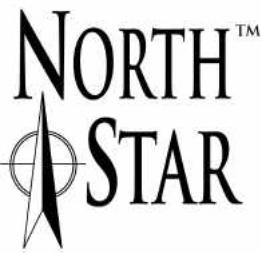
2.

Where DO I START?
Your Bushnell telescope can bring the wonders of the universe to your eye. While this manual is intended to assist you in the set-up and basic use of this instrument, it does not cover everything you might like to know about astronomy. Although Northstar will give a respectable tour of the night sky, it is recommended you get a very simple star chart and a flashlight with a red bulb or red cellophane over the end. For objects other than stars and constellations, a basic guide to astronomy is a must. Some recommended sources appear on our website at www.bushnell.com. Also on our website will be current events in the sky for suggested viewing. But, some of the standbys that you can see are:
The Moon—a wonderful view of our lunar neighbor can be enjoyed with any magnification. Try viewing at different phases of the moon. Lunar highlands, lunar maria (lowlands called "seas" for their dark coloration), craters, ridges and mountains will astound you.
Saturn—even at the lowest power you should be able to see Saturn’s rings and moons. This is one of the most satisfying objects in the sky to see simply because it looks like it does in pictures. Imagine seeing what you’ve seen in textbooks or NASA images from your backyard!
Jupiter—the largest planet in our solar system is spectacular. Most noted features are its dark stripes or bands both above and below its equator. These are the north and south equatorial belts. Also interesting are Jupiter’s four major moons. Pay close attention to their positions from night to night. They appear to be lined up on either side of Jupiter.
Mars—The Great Red Planet appears as a reddish-orange disk. Look at different times of the year and try to catch a glimpse of the white polar ice caps.
Venus—just like the moon, Venus changed phases from month to month. Some views of brilliant Venus appear as if you were looking at a distant crescent moon.
Nebulae—The Great Orion Nebula is a very well known night sky object. This and many others are brought to you by this telescope.
Star Clusters—V iew millions of stars densely packed in a cluster that resembles a ball.
Galaxies—One of the greatest and most interesting galaxies is our neighbor the Andromeda Galaxy. Enjoy this and many others.
3.
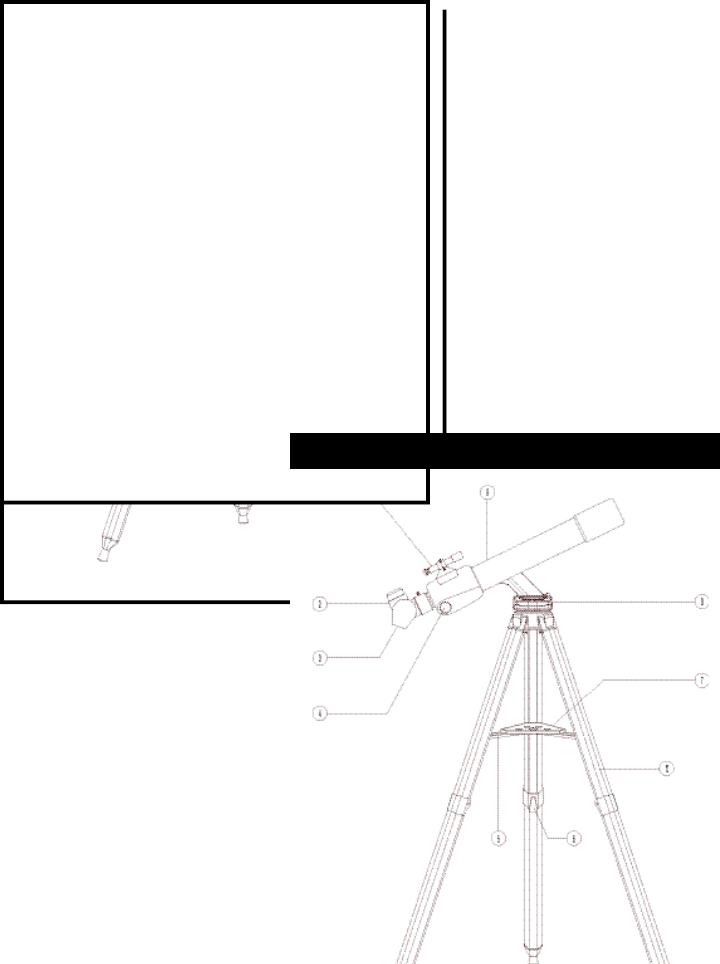
78-7860 60mm Refractor |
|
Parts Diagrams |
|
|
|
78-7880 80mm Refractor
IMPORTANT:
READ THROUGH
ASSEMBLY INSTRUCTION
BEFORE YOU ASSEMBLE
YOUR TELESCOPE.
4.
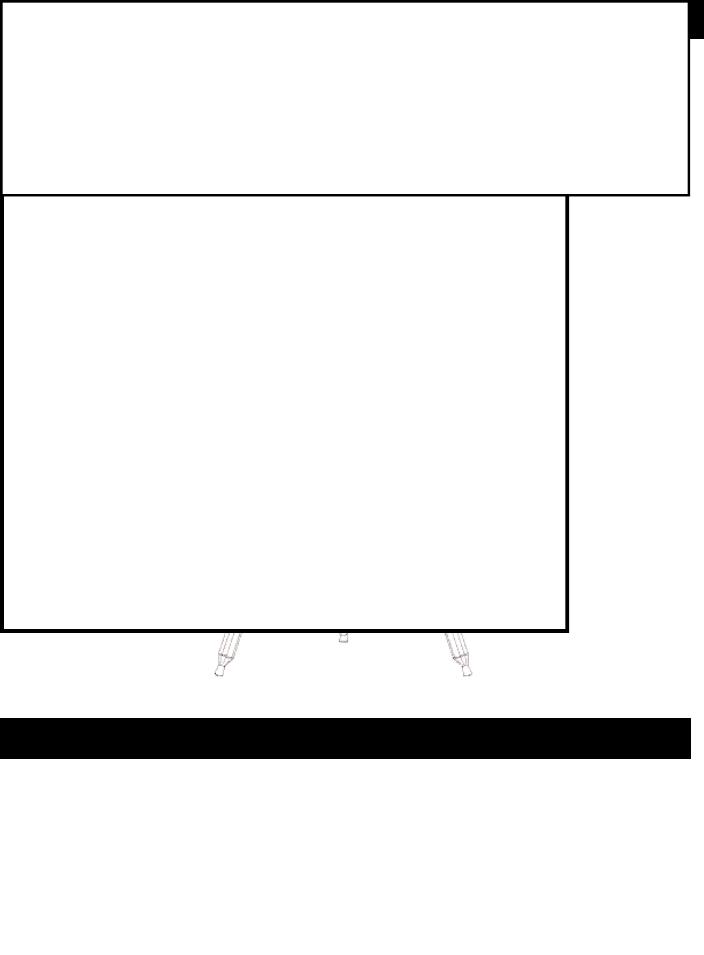
Parts Diagrams (Continued)
78-7830 3” Reflector
78-7845 4.5” reflector
Telescope Parts Diagram
5.
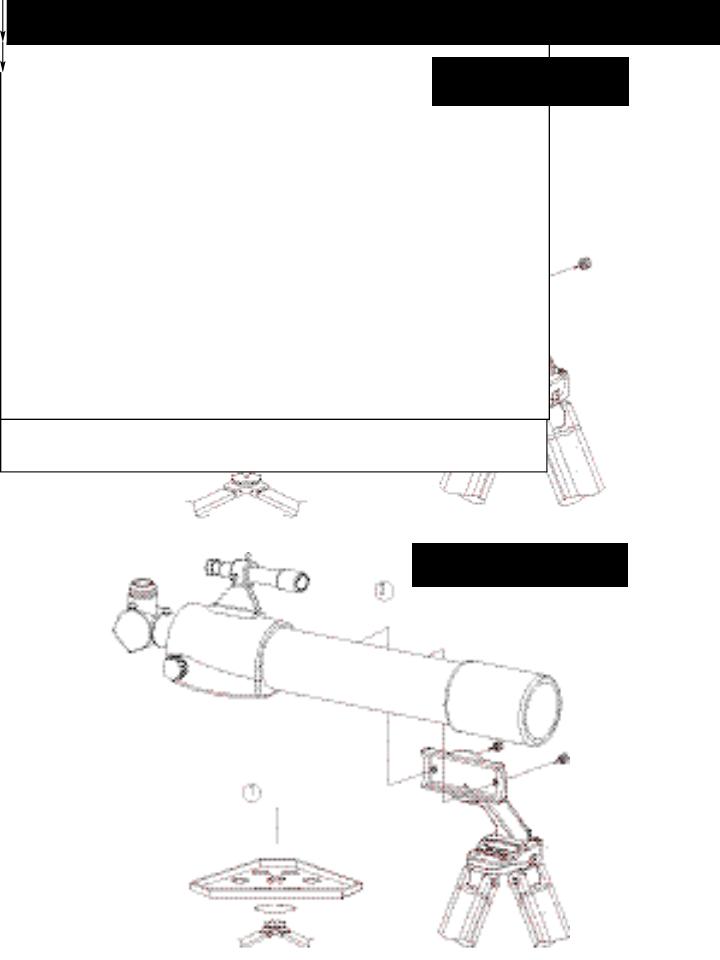
Quick Assembly Diagram
78-7860 60mm Refractor
78-7880 80mm Refractor
6.
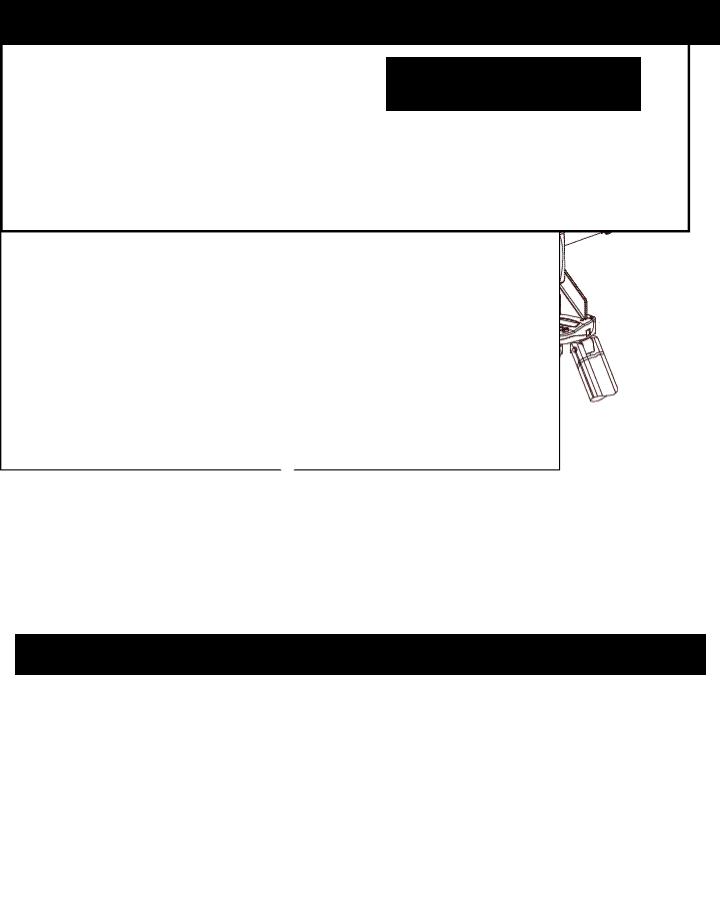
Quick Assembly Diagram
78-7830 3” Reflector
78-7845 4.5” reflector
2
1
Parts List
7.

Detailed Assembly
No tools are required for assembly of your telescope.
Remove all components from the carton and identify all components. It is a good idea to lay all the parts out in front of you before assembly. Since your telescope is a precision optical system the parts require careful handling—particularly the onboard computer, telescope, eyepieces, and various accessory lenses.
SET-UP TRIPOD AND ACCESSORY TRAY
1.Stand Northstar Computerized Star Locator Assembly and attached tripod legs in the upright position. Spread tripod legs to a comfortable distance.
2.Fold down the accessory tray braces and place the Quick Release Accessory Tray on top of braces. (See Quick Assembly Diagram)
3.Turn accessory tray until it snaps into place.
4.Adjust tripod leg height to suit by opening tripod leg lever and extending tripod legs to desired height. Clamp Tripod Leg lever closed when complete.
ATTACH TELESCOPE TUBE
1.Locate Main Telescope Tube.
2.Remove Telescope Tube Thumb Nuts from side of Telescope Tube. (See Quick Assembly Diagram)
3. Position Main Telescope Tube Attachment Bolts through Telescope Tube Bracket at the top of the N o r t h s t a r Computerized Star Locator Assembly. Make sure the telescope is pointing in the correct direction. (Logo on telescope tube should be right side-up.)
4. Reattach Telescope Tube Thumb Nuts to Main Telescope Tube Attachment Bolts once Main Telescope Tube and Northstar Computerized Star Locator Assembly are assembled together.
ATTACH FINAL TELESCOPE ACCESSORIES
1. Locate Wide Field Finderscope.
For Refractor Telescopes: Northstar Refractor Telescope Models have Finderscope Mount
already attached to Main Telescope Tube. Simply place the Wide Field Finderscope into the Finderscope Mount by backing out the Finderscope Adjustment Screws to allow Finderscope to be fully inserted into the Finderscope Mount.
NOTE: Finderscope should be facing forward (Large end nearest the lens end of the telescope tube).
For Reflector Telescopes: Remove Finderscope attachment nuts from Main Telescope Tube. Place Finderscope Assembly over Finderscope Attachment Bolts and reattach Finderscope thumb nuts to Finderscope Mount Bolts.
NOTE: Finderscope should have large end of the finderscope facing open end of telescope tube.
2. Attach Low Power Eyepiece:
For Reflector Telescope Models: Insert lowest power eyepiece in the focusing mechanism by backing out eyepiece set screw and inserting eyepiece fully.
For Refractor Telescope Models: Insert lowest power eyepiece into the penta mirror by
backing out eyepiece set screw, then insert penta mirror into the focusing tube of the Main Telescope Tube by backing out focusing tube set screw.
3.Tighten all set screws to secure accessories.
4.Remove Objective Dust Cover and Finderscope Dust Cover Caps.
8.

Detailed Assembly (continued)
M
SELECTING AN EYEPIECE
You should always start viewing with the lowest power eyepiece, which in this case is the 20 mm lens. Note: the base power of each eyepiece is determined by the focal length of the telescope objective lens. A formula can be used to determine the power of each eyepiece: telescope OBJECTIVE lens focal length divided by EYEPIECE focal length = MAGNIFICATION (e.g. Using the 20 mm lens, a sample calculation could look like this: 750 mm / 20 = 38x or 38 power. Telescope models will vary in focal length.)
Included with this telescope is a Barlow lens. Barlow lenses are used to double or triple the power of your telescope. Place your Barlow between the focusing tube and the eyepiece. Using the example above, your 3x Barlow lens would give you a total power of 114x or 114 power. (38 x 3 = 114x or 114 power). The magnification calculation would look like this: 750 mm /20mm = 38 power. 38 power x 3=114 power.
MFOCUSING TELESCOPE
1.After selecting the desired eyepiece, aim main telescope tube at a land-based target at least 200 yards away (e.g. Atelephone pole or building).
2.Fully extend focusing tube by turning Rack and Pinion Focusing Mechanism.
3.While looking through selected eyepiece (in this case the 20 mm), slowly retract focusing tube by turning Rack and Pinion Focusing Mechanism until object comes into focus.
MALIGNING FINDERSCOPE
Look through Main Telescope Tube and establish a well-defined target. (see focusing telescope section)
Looking through Wide Field Finderscope, alternate tightening each Finderscope Adjustment Screw until crosshairs of Wide Field Finderscope are precisely centered on the same object already centered in Main Telescope Tube’s field of view.
Now, objects located first with the Wide Field Finderscope will be centered in the field of view of the main telescope.
Never Look Directly At The Sun With Your
Telescope Permanent Damage
To Your Eyes May Occur
9.

MENJOYING YOUR NEW TELESCOPE
1.First determine your targeted object. Any bright object in the night sky is a good starting point. One of the favorite starting points in astronomy is the moon. This is an object sure to please any budding astronomer or experienced veteran. When you have developed proficiency at this level, other objects become good targets. Saturn, Mars, Jupiter, and Venus are good second steps to take.
2.The first thing you need to do after assembling the telescope as planned is center the desired object in the finderscope’s cross hairs. Provided you did a reasonable job aligning the finderscope, a quick look through the main telescope tube at low power should reveal the same image. With the lowest power eyepiece (the one with the largest number printed on it) you should be able to focus the same image that you saw through the finderscope. Avoid the temptation to move directly to the highest power. The low power eyepiece will give you a wider field of view, and brighter image—thus making it very easy to find your target object. At this point with a focused image in both scopes, you’ve passed the first obstacle. If you don’t see an image after attempting to focus it in, you might consider aligning your finderscope again. Once you pass this step, you’ll will enjoy the time spent ensuring a good alignment. Every object you center in the finderscope will be easily found in the main telescope tube, which is important for continuing your exploration of the night sky.
3.The low power eyepieces are perfect for viewing the full moon, planets, star clusters, nebulae, and even constellations. These should build your foundation. However, for more detail, try bumping up in magnification to higher power eyepieces on some of these objects. During calm and crisp nights, the light/dark separation line on the moon (called the "Terminator") is marvelous at high power. You can see mountains, ridges and craters jump out at you due to the highlights. Similarly, you can move up to higher magnifications on the planets and nebulae. Star clusters and stars are best viewed through the low power no matter what.
4.The recurring astronomical theater we call the night sky is an ever-changing billboard. In other words, not the same movie plays all the time. Rather, the positions of the stars change not only hourly as they seem to rise and set, but also throughout the year. As the earth orbits the sun our perspective on the stars changes on a yearly cycle about that orbit. The reason the sky seems to move daily just as the sun and the moon "move" across our sky, is that the earth is rotating about its axis. As a result you may notice that after a few minutes or a few seconds depending on what power you are viewing at, the objects in your telescope will move. At higher magnifications especially, you will notice that the moon or Jupiter will "race" right out of the field of view. To compensate, just move your telescope to "track" it in the necessary path.
10.

MHELPFUL HINTS
1.Your telescope is a very sensitive instrument. For best results and fewer vibrations set your telescope up on a level location on the ground rather than your concrete driveway or your wooden deck. This will provide a more stable foundation for viewing, especially if you’ve drawn a crowd with your new telescope.
2.If possible view from a location that has relatively few lights. This will allow you to see much fainter objects. You’d be surprised how much more you’ll see from your local lake or park when compared to a backyard in the city.
3.Using your telescope out a window is NEVER recommended.
4.View objects that are high in the sky if possible. Waiting until the object rises well above the horizon will provide a brighter and crisper image. Objects on the horizon are viewed through several layers of earth’s atmosphere. Ever wonder why the moon appears orange as it sets on the horizon. It’s because you are looking through a considerable more amount of atmosphere than you would directly overhead. (Note: If objects high in the sky are distorted or wavy, you are probably viewing on a very humid night.) During nights of unstable atmosphere, viewing through a telescope can be frustrating if not impossible. Astronomers refer to crisp, clear nights as nights of "good seeing."
11.

Northstar Computer
Interface Diagram
1.Computer Link
2.Scroll Up Button
3.Scroll Down Button
4.Back Button
5.Enter Button
6.LCD Display
7.On/Off/Dim Button
8.Battery Cover Door
9.Battery Cover Set Screw
Button Functions
Back Button: This button functions to navigate to the previous level within the operating framework and/or back to the previous level of input.
Enter Button: This button functions to select certain menu choices. By pressing the ENTER button Northstar will advance to the selected level. When an object name or number is listed on the screen, the ENTER button can also be pressed to display a scrolling text description of the object
Scroll Up Button: This button functions to scroll up through various menus within Northstar. Anytime you encounter a blinking text/number option, the scroll button will display the various choices within that menu. (Note: To select an option that you have scrolled to, just press the ENTER button.
Scroll Down Button: This button functions to scroll down through various menus within Northstar. Anytime you encounter a blinking text/number option, the scroll button will display the various choices within that menu.
(Note: To select an option that you have scrolled to, just press the ENTER button.
On/Off/Dim: The On/Off Button will turn the Northstar Computerized Star Locator on and off. Once on, you can adjust the level of LCD Backlight Illumination by pressing the On/Off/Dim Button to cycle through the brightness levels. To turn the unit off, simply depress and hold the On/Off/Dim button for three seconds and release. (Note: The Northstar Computerized Star Locator will automatically turn itself off after 20 minutes of inactivity.)
LCD DISPLAY
The Liquid Crystal Display (LCD) is a two-line, sixteen character display. The LCD also has an electroluminescent backlight for use during nighttime viewing with the Northstar Computerized Star Locator.
12.
